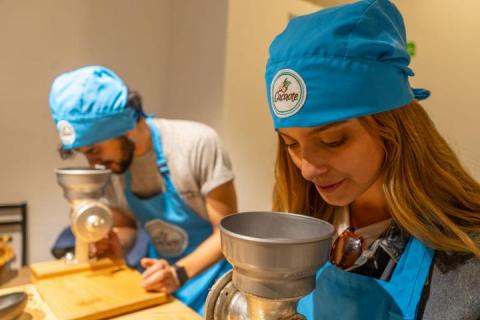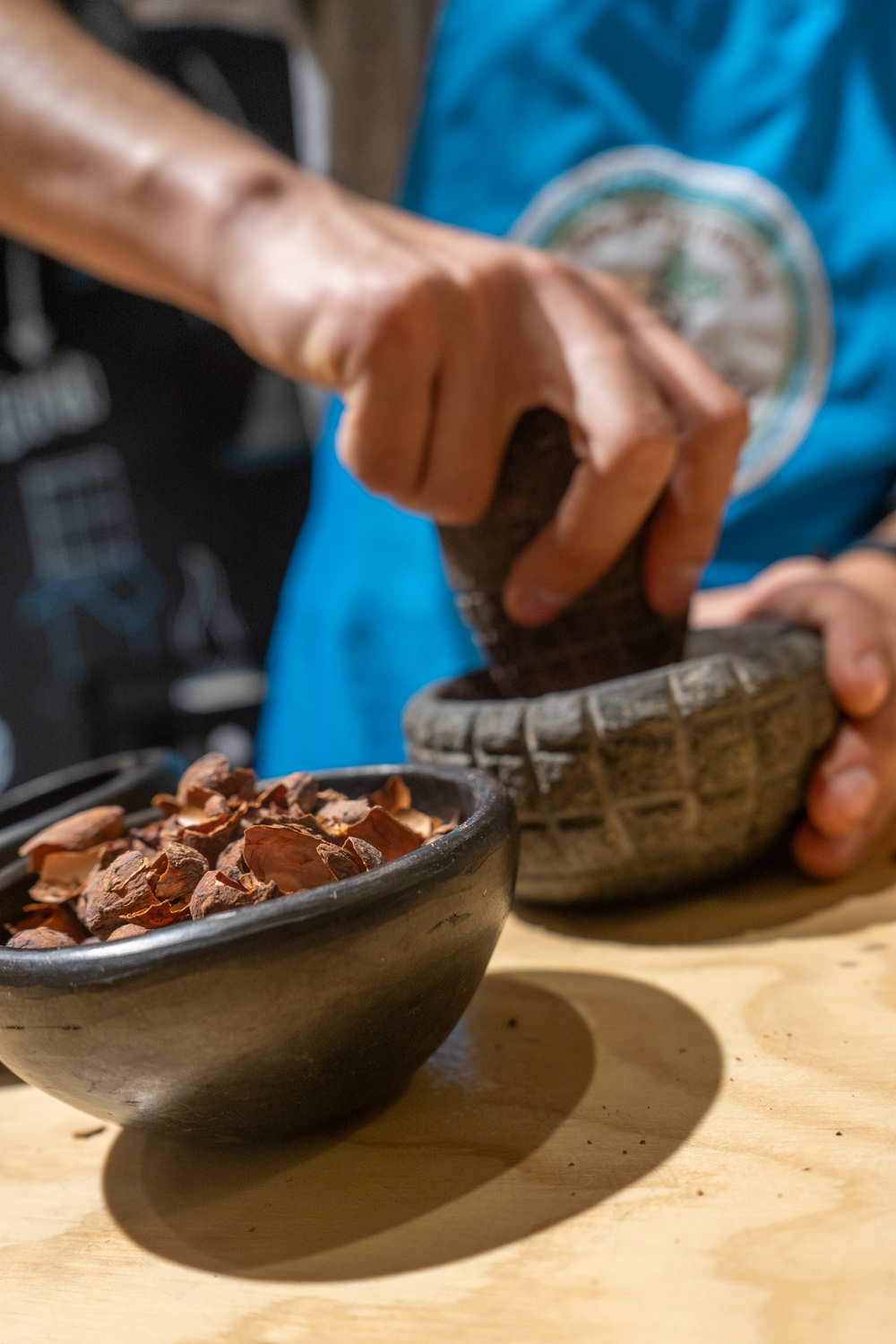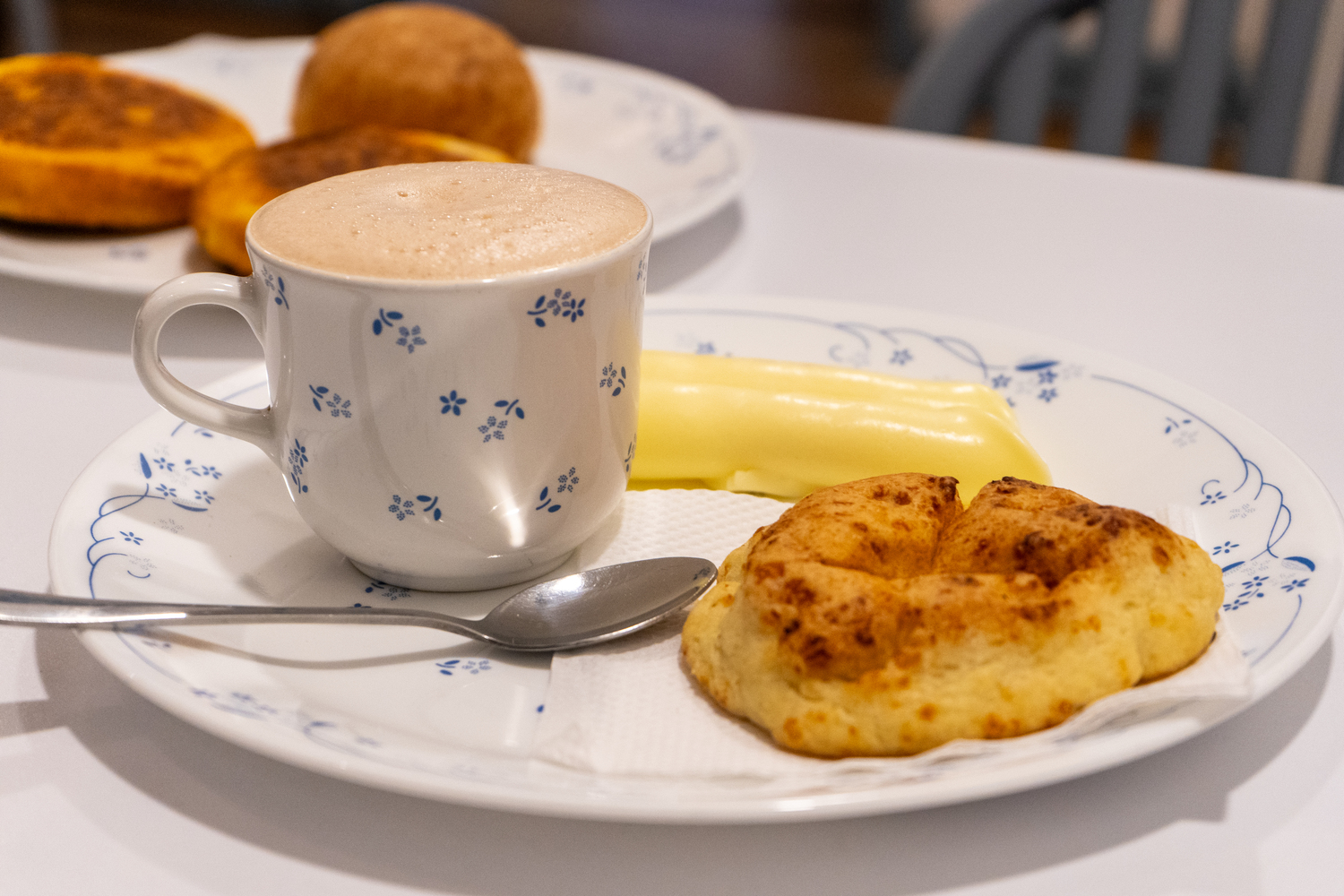
Chesca Barrios is a Peruvian married to a Colombian man. She has been living in Tenjo, Cundinamarca, for four years. Recently, she received a visit from her friend Pamela Arce, who arrived from Lima. As a gift, a mutual friend sent them to participate in a workshop at Cacaote, a business founded by Lizeth Caro Parra, an industrial engineer who has been passionate about the flavors and aromas of chocolate since childhood.
After an extensive research process, Lizeth decided to invest everything in her business, located in the La Candelaria neighborhood. These include chocolate bars available in various flavors and colors (white chocolate with sunflower seeds and blueberries, coffee, cocoa, and mango), and delicious hot beverages made from unique blends, which can be enjoyed on-site. Lizeth, who is 33 years old, serves as the instructor. After washing our hands and putting on aprons and hats, we begin the workshop. There are three stovetops available. The first step is to heat the cocoa beans, which have already been roasted and fermented. We stir them in a pan using a ladle. This process takes approximately 15 minutes. When the first bean pops, like popcorn, it indicates that we have completed the first stage of the process.

A powerful millenary fruit
Meanwhile, the two Peruvians ask about the origin of this fruit. Although it also grows in their country, they are not familiar with it. Lizeth explains that it originates from the Amazon River territory in the Upper Amazon, between Venezuela, Colombia, Ecuador, Peru, and Brazil. After colonization, it began to spread to other regions. She adds that cocoa has been a sacred fruit for various indigenous communities, used in their rituals and religious ceremonies as an offering to their gods.
As she gives us the instructions, Lizeth mentions that she works with small producers of artisanal cocoa from different regions of the country. The cocoa we use comes from Mariquita (Tolima), a community organization that works in a crop restitution process and seeks to replace ranching practices. After completing the first step, we proceed to remove the husk from the beans, placing them in a separate container. This husk is also used in infusions and eventually becomes nibs, which can be used in cake preparations or mixed with cereal, yogurt, or fruit. We try some nibs; they are crunchy and have a subtle bitter taste of cocoa.
We begin by placing selected beans in a stone mortar (an ancestral tool) and mashing them with a stone pestle. Using the Corona brand grinder that our grandparents used, we add the ground cocoa to create a thick brown mixture. After kneading for several minutes, Lizeth asks us to form small balls, which we then place in a glass container to take home and prepare our first batch of artisanal chocolate.
The experience, which lasts approximately one and a half hours, concludes with the delivery of a diploma certifying our participation and a delicious hot cup of artisan chocolate.

For more information on this ancestral fruit and its benefits, or to purchase selected products made from the finest artisan cocoa in the country, visit Cacaote.
- Address: Carrera 4a # 12b-13, La Candelaria.
- Phone number: +57 319 7674953
- Website: www.cacaotestore.com/

In the La Candelaria neighborhood, you can participate in a practical workshop to learn the benefits of this ancestral fruit. At the shop, you can enjoy a delicious cup of hot chocolate.


